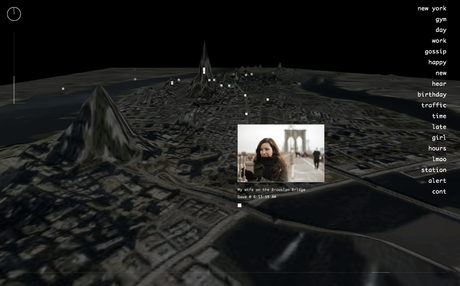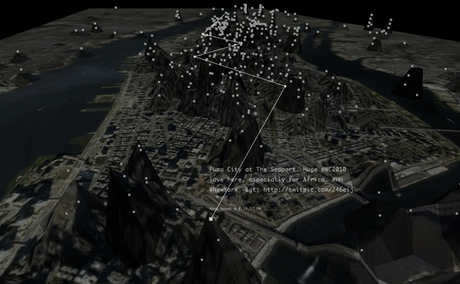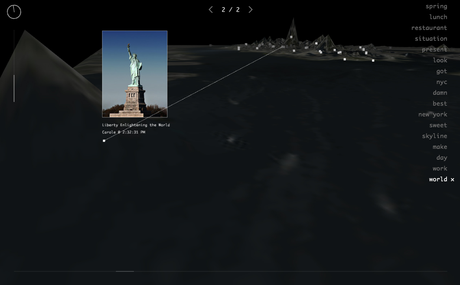What social media activity has to do with the literal lay of the land.
By Maria Popova
In December, the now-infamous map of Facebook friendships revealed an uncanny cartography of the world depicted purely through social relationships data. Now, a project by Christian Marc Schmidt and Liangjie Xia is taking the concept ambitiously further: Invisible Cities is a transmedia mapping project, displaying geocoded activity from social networks like Twitter and Flickr within the context of an actual urban map — a visceral, literal embodiment of something VURB‘s Ben Cerveny has called “the city as a platform,” the idea that cities are informational media and living computational systems for urban society.

“By revealing the social networks present within the urban environment, Invisible Cities describes a new kind of city — a city of the mind.”

Individual nodes appear whenever real-time activity takes place and the underlying terrain represents aggregate activity. As data accumulates, the landscape morphs into peaks and valleys that represent highs and lows of data density and information activity — a data topography visualization not dissimilar in concept to Aaron Koblin’s Amsterdam SMS project, and also built with Processing.

“The interplay between the aggregate and the real-time recreates the kind of dynamics present within the physical world, where the city is both a vessel for and a product of human activity. It is ultimately a parallel city of intersections, discovery, and memory, and a medium for experiencing the physical environment anew.”
Invisible Cities is available as a free download for Mac OS X and Windows — read the instructions and go play on your own.
via Creators Project
